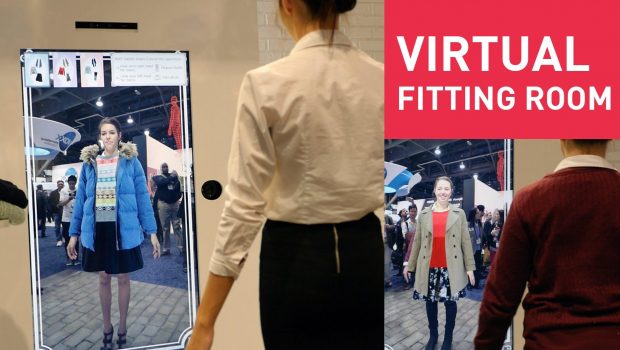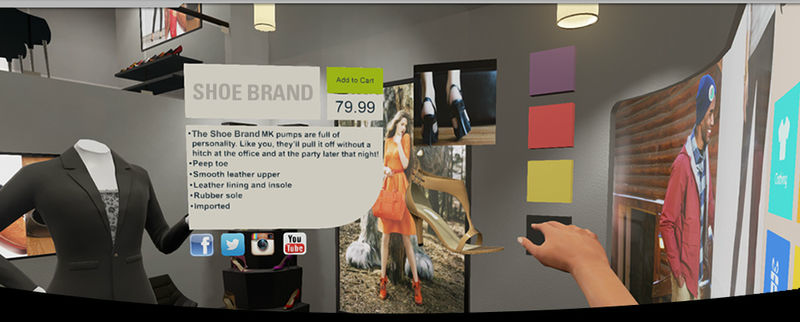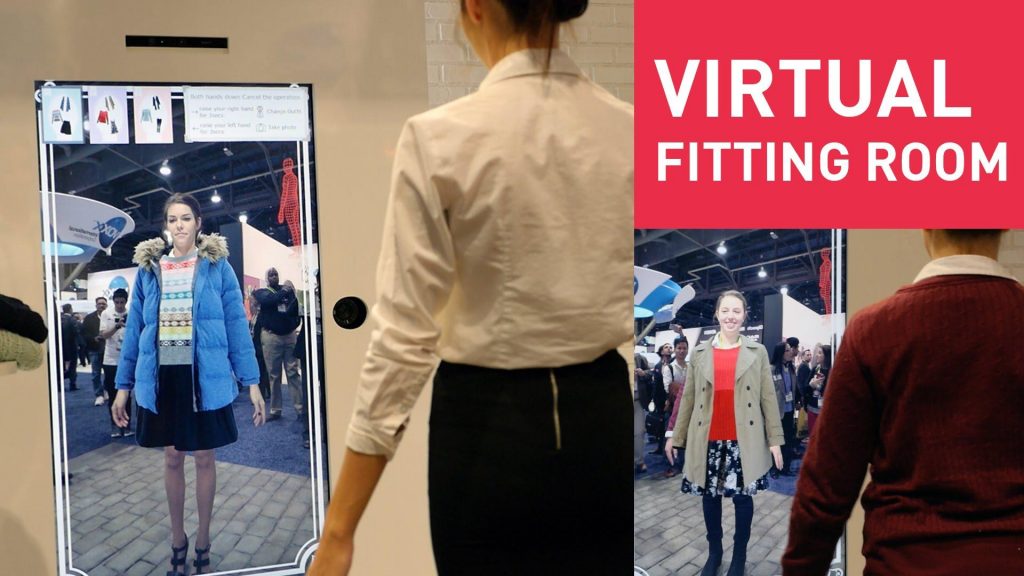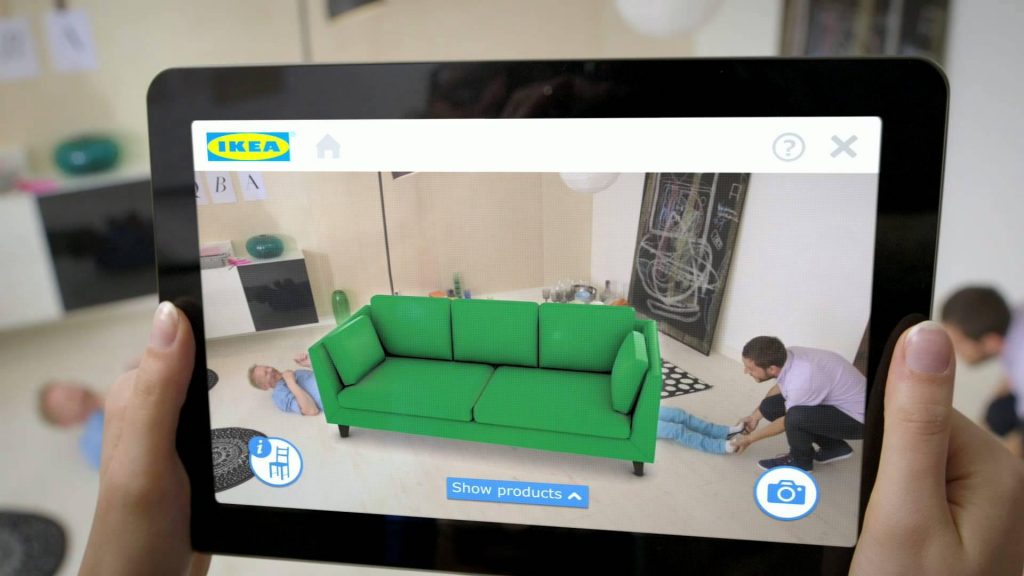How virtual and augmented reality will change the way we shop
IT professionals and visionaries see the potential of virtual reality (computer-simulated or recreated real life environment) and augmented reality (graphic content integrated into live videos or user environment) technologies and keep on working to develop more sophisticated and accessible software and hardware to deliver high quality user experience in gaming, education, shopping, travel, entertainment and work.
Emergence of virtual reality technology was a big deal already decades ago, but as today this technology is far more advanced and affordable, and auxiliary technologies are in place (the spread of the Internet, mobile, high-quality graphic, high-performance hardware, 3D etc.), the use of virtual and augmented reality will be more accessible and universal. 2016 is a very promising year for the use of these technologies in eCommerce. Online retailers are looking at virtual reality technology as a way to provide consumers with a better physical and emotional feel of the products and help them take the decision to purchase.
There are already some devices and apps available, and more will follow, as technology shows recently demonstrated.
Mobile VR devices include Samsung’s Gear VR (compatible with a few types of Samsung devices), Google Cardboard (compatible with most android phones), Merge VR (compatible with most Android and iOS phones). A few PC/Console VR devices are coming soon including Oculus Rift, HTC Vive,Playstation VR. Some AR devices are already available or are entering the market soon: Microsoft HoloLens, Google Glass, Vuzix M100 Smart Glasses, GlassUp.
Investments in the technologies have spiked in 2016: in the first two months over $1.1 billion has been invested in virtual and augmented reality compared to $700 million in 2015. Overall investment in VR since 2010 constitutes $4 billion, of which the mixed reality company Magic Leap received over $1.4 billion from private investors.
WalkerSands study demonstrates that 63% of consumers expect that virtual reality will change the way they shop and 66% say they are interested in shopping via virtual reality. So far only 10% of consumers are planning to use virtual devices for shopping compared to 37% for travel and exploration, 33% for gaming and 4% for movies or TV. At the same time, 35% say that they would shop more online if they were able to try products on virtually. Industry experts agree that these technologies will change our shopping experience, just as mobile devices have revolutionized eCommerce.
What has been holding virtual shopping revolution back is a lack of devices able to provide high quality virtual reality experience, but as more affordable headsets like Google Cardboard become available, the technology is expected to be more commonly used in the nearest future.
Retailers are flirting with the virtual reality, some providing their customers with a tour of the interiors of their famous shopping space, others showcasing their signature items in 3D mode.
Lowe’s, a chain of home renovation and appliances stores installed Holoroom space in its 19 US stores where customers can see a 3D mockup of their planned renovation using virtual reality technologies including Oculus Rift or Google Cardboard.
Augmented reality also had a breakthrough in eCommerce recently, most notably by Apple and IKEA. Apple produced an app, in which potential customers could try on an Apple Watch. The app soon became unavailable, but before it did, users were able to see the device from different angles, flip between wristbands of different sizes and colors. In 2014 IKEA launched its catalog app, which allowed users to preview pieces of furniture in their rooms and gardens in 3D. DeBeers’ augmented reality app allow customers to try on jewelry from Forevermark collection by projecting the items on smartphone/laptop screen overlaying it on top of the image taken by the device’s camera.
The types of products that customers would be willing to test with the help of VR and AR technologies include virtual furniture app (86%), virtual dressing room (88%), color changing app (73%), catalog app (65%), shopping app (75%), shoe sampler app (87%), virtual vehicle manual (75%), gamification app (61%).
Another promising use for retailers would be integrating shop details into a navigation app, where customers would be able to see information about their surroundings including the shops and businesses located nearby. Such apps are possible thanks to the powerful GPS receivers, compasses and accelerometers that are now a commonly used in smartphones.
And if now only the huge brands like Boeing, BMW, Lego, and American Apparel can afford to integrate virtual reality and augmented reality in their business, by 2020 these technologies may become absolutely essential, just the way it happened with mobile-friendly websites few years back.
How AR and VR can influence shopping experience
Visiting virtual stores
2D representations of products are no longer impressive. Instead of videos and pictures, every product in virtual store can be a 3D model customers can manipulate and interact with. This brings a shopping experience to the next level.
Virtual stores give customers the ability to see and feel the actual size of the items they choose. Considering the fact that wrong size is the primary reason for product returns, such ability will become extremely beneficial for both retailers and customers.
Virtual fitting rooms
Virtual fitting rooms are based on AR technology and let visitors try on products without actually wearing them (clothes, shoes, accessories etc.). This technology combines mirror with augmented reality and lets customers experimenting with colors and product types while saving their time. It also improves conversion rates and reduces returns for clothes, jewelry, cosmetics and other products that may be tried on.
Augmented reality apps
Augmented reality apps provide similar functionality as virtual fitting rooms do, but with the help of a smartphone. Apps can be used to:
- See products in real size. Similar to IKEA app that integrates virtual furniture items into user environment.
- Receive more product information while in-store. Augmented reality Apps can provide additional information after pointing Smartphone camera on certain products.
- Try specific products. For example, Sephora app lets customers try on thousands of lip colors using users’ photo.
Shopping on the go
Augmented reality devices will allow shopping on the go. No need to visit brick-and-mortar stores and waste your time.
Enhances brand recognition
Using VR and AR technologies can help brands increase brand awareness through
gamification and producing associated content.
Empowers advertising campaigns
Virtual and augmented reality will breathe a new life into advertising process. Almost all advertising techniques used in modern world can be projected on virtual and augmented experience. From targeted ads displayed while users are surfing internet in virtual reality, to displaying board advertising travel destinations when you are waiting for your bus or a series of ads in a shop window, which you pass by. Today Facebook is among the biggest advertising platforms in the world and acquiring Oculus VR technology opens new prospects in terms of Facebook advertising.
Better customer support
Virtual and augmented reality brings customers support service to the brand new level. Along with face-to-face chat, customers can get more detailed information on how certain products should be exploited or fixed.
Enhanced post-purchase experience
In addition to improved customer support, VR and AR technologies can enhance users’ post-purchase experience by bringing traditional techniques to the brand new level and implementing new ways to engage with customers to ensure only the best shopping experience.
Author bio: Oleg Yemchuk is the marketing manager at MavenEcommerce sharing office space with Magento business experts and software developers. Oleg is marketing expert by day and geek by night. As a geek culture fan, he spends his free time playing video games and reading comics.



















One Response to How virtual and augmented reality will change the way we shop